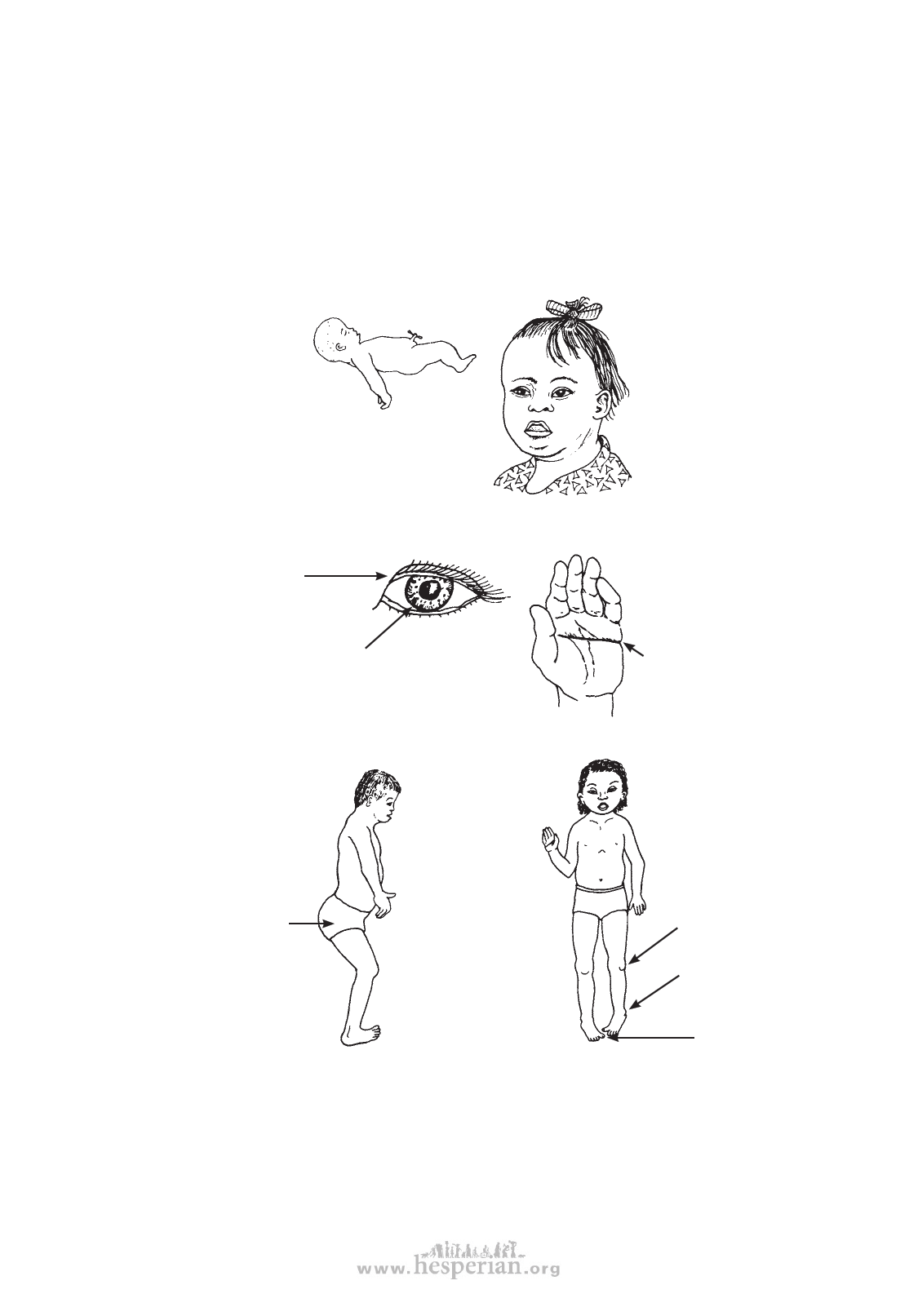
MENTAL slowness
DOWN SYNDROME
In many areas, Down syndrome—or ‘mongolism’—is the most common form of
mental slowness. These children are slower than others in learning to use their bodies
and their minds. There are also certain physical signs or problems. (This combination
of various signs is called a ‘syndrome’.) The baby does not develop normally in the
womb because of an error in the ‘chromosomes’ (material in each cell of the body that
determines what a baby will be and look like).
These are the typical signs of Down (but not all the children have all these signs):
• At birth, baby seems
floppy and weak.
• Baby does not cry much.
• The baby is slower than
other babies her age to:
turn over, grasp things,
sit up, talk, walk.
• When suddenly lowered,
the baby does not react
by spreading her arms, as
a normal baby does.
• A fold of skin covers the
inner corner of the eyelid.
• Eyelids may be swollen and red.
• The iris of the eye has many little
white specks; like sand. These usually
go away by 12 months of age.
• eyes slant upward;
sometimes cross-eyed
or poor sight
• ears low
• small mouth, hangs
open; roof of mouth
is high and narrow;
tongue hangs out
• short wide hands
with short fingers;
little finger may
be curved, or have
only one fold
• one deep crease
across the palm
(sometimes in normal
children, too)
279
• short or small head, wide
and flat in the back
• flat face
• small nose,
flat between
the eyes
• short neck
• rounded
shoulders
• short arms
and legs
• sometimes dislocated
hips
• kneecap slips
to one side
• ‘pigeon-toed’;
flat feet
Other possible signs:
• big toe far apart
from other toes
• Elbow, hip, and ankle joints may be very loose and flexible.
• One out of 3 has heart problems.
• May develop leukemia (blood cancer).
• Check older children for hearing and seeing problems.
• O ne out of 10 has deformed neck bones which can slip and pinch the nerve cord in the spine. This
may cause sudden or slowly increasing paralysis—or sudden death.
disabled village children